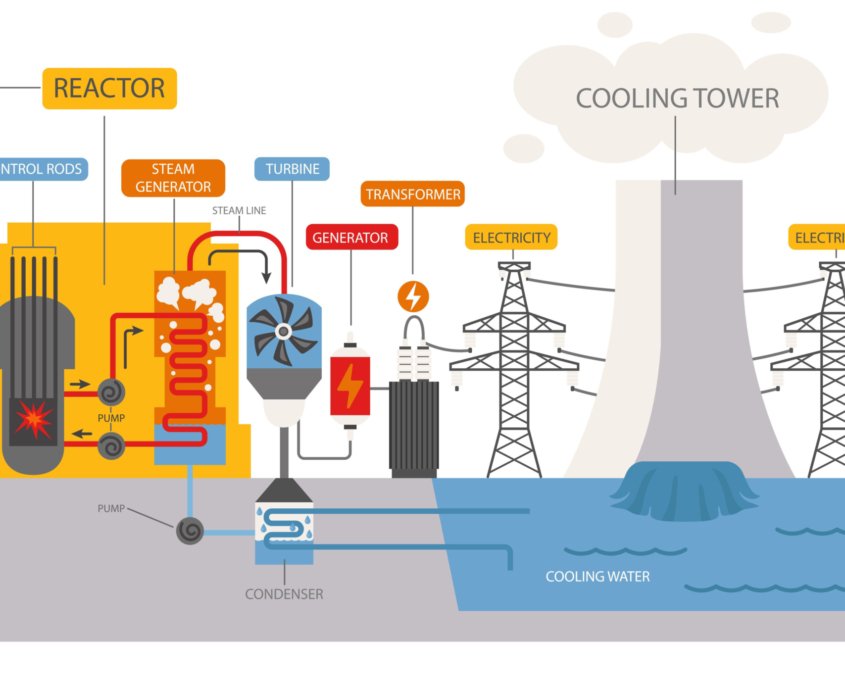Nuclear Power Plants in Florida: A Comprehensive Diagram

Florida, known for its sunny beaches and vibrant tourism, also has a significant presence in the field of nuclear energy. The state’s nuclear power plants play a crucial role in its energy landscape, providing a substantial portion of its electricity while contributing to the diversification of its energy sources. This article delves into the history, operation, benefits, and challenges associated with nuclear power plants in Florida.
A Brief History of Nuclear Power in Florida
Table of Contents
ToggleNuclear power in Florida began its journey in the late 20th century, a period marked by increasing interest in nuclear energy as a reliable and low-emission source of electricity. The state’s foray into nuclear energy was driven by the need to diversify energy sources and address the growing demand for electricity.
The first commercial nuclear power plant in Florida, the St. Lucie Nuclear Plant, began operations in the 1970s. Its successful implementation set the stage for the expansion of nuclear energy in the state. Over the years, Florida has seen the development of additional nuclear facilities, each contributing to the state’s energy portfolio.
Key Nuclear Power Plants in Florida
St. Lucie Nuclear Plant
Located on Hutchinson Island, the St. Lucie Nuclear Plant is one of Florida’s oldest and most prominent nuclear facilities. It consists of two pressurized water reactors (PWRs), each with a generating capacity of approximately 850 megawatts. The plant is operated by Florida Power & Light Company (FPL) and has been in operation since the late 1970s.
The St. Lucie Plant plays a significant role in providing electricity to the state, serving millions of Floridians. Its location along the Atlantic coast offers several advantages, including proximity to water for cooling purposes and a relatively low risk of seismic activity.
Turkey Point Nuclear Plant
Situated near Homestead, Florida, the Turkey Point Nuclear Plant is another major facility in the state’s nuclear energy landscape. The plant features two pressurized water reactors, each with a generating capacity of about 700 megawatts. Operational since the 1970s, Turkey Point has undergone several upgrades and expansions over the years.
Turkey Point’s location near the Everglades and its role in supporting the local electricity grid make it a vital asset for Florida’s energy infrastructure. The plant’s proximity to natural resources also contributes to its operational efficiency.
Crystal River Nuclear Plant
The Crystal River Nuclear Plant, located in Citrus County, Florida, was another significant player in the state’s nuclear energy sector. It featured a single pressurized water reactor with a capacity of around 860 megawatts. However, the Crystal River Plant faced challenges in recent years, including issues related to its containment structure.
In 2013, Duke Energy, the operator of the Crystal River Plant, announced the decision to permanently shut down the facility. The closure was a result of structural problems and the high costs associated with repairs and upgrades. The site is now undergoing decommissioning, a process that involves safely dismantling the plant and managing radioactive materials.
Benefits of Nuclear Power in Florida
Reliable Energy Supply
One of the primary advantages of nuclear power is its ability to provide a reliable and consistent source of electricity. Nuclear plants operate at high capacity factors, meaning they can produce electricity continuously and efficiently. This reliability is crucial for meeting the state’s energy demands, especially during peak usage periods.
Low Greenhouse Gas Emissions
Nuclear power is recognized for its low greenhouse gas emissions compared to fossil fuel-based energy sources. Nuclear reactors produce electricity through nuclear fission, a process that does not emit carbon dioxide (CO2) or other greenhouse gases. This contributes to Florida’s efforts to reduce its carbon footprint and combat climate change.
Energy Diversification
By incorporating nuclear power into its energy mix, Florida diversifies its energy sources and reduces its reliance on any single type of fuel. This diversification enhances the resilience of the state’s energy infrastructure and helps ensure a stable and secure energy supply.
Challenges and Controversies
Environmental and Safety Concerns
Despite its benefits, nuclear power is not without challenges and controversies. Environmental and safety concerns are central to debates about nuclear energy. Issues such as the management of radioactive waste, the potential for accidents, and the impact on local ecosystems are areas of concern.
The potential risks associated with nuclear power plants, including the possibility of accidents or natural disasters, highlight the importance of stringent safety measures and regulations. Florida’s nuclear facilities adhere to rigorous safety standards, but public concerns about safety and environmental impact persist.
High Costs and Decommissioning
Nuclear power plants involve substantial initial investment and ongoing operational costs. Building and maintaining nuclear facilities require significant financial resources, and decommissioning an aging plant can be a complex and costly process.
The closure of the Crystal River Nuclear Plant exemplifies some of the financial and logistical challenges associated with operating and decommissioning nuclear facilities. Ensuring that decommissioning is carried out safely and effectively is a critical aspect of managing nuclear energy resources.
The Future of Nuclear Power in Florida
Looking ahead, nuclear power will likely continue to play a role in Florida’s energy landscape. The state’s commitment to reducing greenhouse gas emissions and ensuring a reliable energy supply aligns with the benefits offered by nuclear energy.
There are also discussions about potential new nuclear projects and technological advancements in the industry. Innovations such as small modular reactors (SMRs) and improved safety features may shape the future of nuclear power in Florida, offering new opportunities for clean and efficient energy production.
Conclusion
Nuclear power plants in Florida have played a significant role in the state’s energy landscape, providing a reliable and low-emission source of electricity. With key facilities like St. Lucie and Turkey Point contributing to the state’s energy supply, nuclear power has become an integral part of Florida’s strategy for energy diversification and climate change mitigation.
While challenges such as environmental concerns, safety issues, and high costs remain, the benefits of nuclear power—particularly in terms of reliability and low greenhouse gas emissions—underscore its continued importance. As Florida navigates its energy future, nuclear power will likely remain a critical component of the state’s efforts to achieve a sustainable and secure energy supply.













Post Comment